The founding of the Jewish American Society for Historic Preservation. www.JASHP.org
By Jerry Klinger
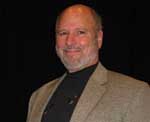
LAS VEGAS, New Mexico — As a kid, my mother won out over my father’s wishes. I was sent to yeshiva for my first eight years of schooling. I learned Torah, Talmud, how to put on Tefilin and yes wander around town with my tzitzit hanging out. A good student I was not, mostly rebellious, wondering about the world, history and where did God come from. The last wonder got me many hours with a very sour faced Rabbi Skates, the principal.
History was a subject that was taught minimally to satisfy the supervisors of county schools who really did not care much what the Jews taught their kids. For us, Columbus sailed the ocean blue and Patrick Henry said give me liberty or death. (He meant liberty or death except for Jews.) Lincoln was mentioned but more time was spent on the Pickle Lady in the Lower East Side who put great uncle Harold through medical school. The Jews moved to California and started the movie business. And that was the sum total of American Jewish history, as least as far as I knew.
Years later, my wife and I started doing the B&B routine. The great Jewish classic, Paint Your Wagon by the mavens of Jewish film, Lerner and Loewe, gripped my imagination. I was born under a wandering star, sung by the not so Jewish Lee Marvin, rang in my ears. We headed to Columbia, California, the once hoped for capital of the Golden State, to savor a real Sierra Nevada gold town.
Our accommodation was the City Hotel in downtown Columbia. The room, much as it was in 1860’s, had almost no modern amenities. If you wanted to shower, it was down the hall and you had to share it with fifteen of your new best friends waiting in line.
Jews and everyone else came to Columbia in the 1850’s when gold was discovered. Inside of a few years, three years tops, Columbia was the largest city in California. Some Jews came to work in the mines, many more opened up little retail stores. There were some incidents of anti-Semitism reported. The frontier generally did not have time for such stuyyot – silliness. Hatred and bigotry never made nobody no money. The town boomed as long as the gold held out. When the gold started to play out in the 1860’s, the Jews, like most everyone else, left town for better opportunities. By 1900, Columbia was a has been.
Columbia today is part of the state park system. It is meant to look and feel much like it did when it was a bustling mining town. Tourism is big business. The State of California has done its best to recreate the Columbia of the 19th century. The wooden sidewalks rise above the street, only back then, a street was a muddy or dusty mess. Not so today. Tourists are unwilling to pull their feet out of mud or scrape off horse pies. Ersatz cowboys in big droopy hats, calico shirts and chaps or Levis have guns hanging by their side, sit on flour barrels, and chew the fat. (I guess the gun part has been taken out by now). The tourist industry calls it living history.
For those souls who stay at the City Hotel, dinner at five-star Christopher’s downstairs, is a must. With no t.v. or radio, a spazier to work off that last piece of cobbler is a required … but to where? The streets are dark, no electric lights, no neon signs, not even a drive in movie to go to.
The wife and I went out into the night to see what could be seen. And yes there was something to be seen. In the distance, around a corner was electric lighting. Curiosity and relief that something was open, directed us to a book store. In we went and into a world of the unknown.
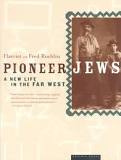
On a central table was a large display of Helen Rochlin’s book, Pioneer Jews. I had to look. After all, what the hell is a Pioneer Jew? They never mentioned such a strange animal in Yeshivah class. I bought a copy and the adventures began. There really was such a thing as pioneer Jews. Who knew?
Next spring, Judy and I were in Santa Fe. I had been reading my Helen Rochlin closely. I said, “Judy the first synagogue in the Territory of New Mexico is just over those hills yonder, lets go see.” Actually the hills were over sixty miles away. She being a good sport rolled her eyes and took a needlepoint she was working on for our kitchen and aimed at our three sons. “There are two choices for dinner, take it or leave it.” Off we went.
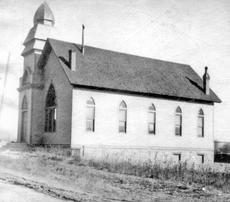
Rochlin said the first synagogue, Congregation Montefiore, probably named after the famed British Jewish philanthropist in hopes of getting a few sheckels, was at 9th and Douglas. We went – nothing to see there. So we trudged to the second location, at 8th and Columbia. Now I was flapjack confused. There was a little white Roman Catholic Church complete with Steeple. Across the street, Highland University and a bunch of beautiful Gingerbread type houses. I pirouetted in the middle of the street. No synagogue. I got the rolling eye look from the wife. Ouch!
We went into town to speak to the town tourist bureau. “Jews?” I asked. “Jews?” they responded. After a few minutes of stammering, “where were the Jews here?” they explained that that beautiful little white church on 8th and Columbia had been the 1922 synagogue. I had no idea….
The first need for any Jewish community is not a synagogue building, it is for a cemetery. Nobody is dying to get into a synagogue but everyone is dying to… you know the old joke. As for a synagogue without dues, anybody’s house or a large tree that can shelter ten men can serve as a synagogue. In 1881, the Montefiore Jewish Cemetery was begun next to the Masonic cemetery. I wandered into the cemetery and discovered gravesites to my amazement saying the folks came from Germany, even Baltimore.
A synagogue is a statement. It is a statement of permanence and commonality to a community. Jews are saying we are part of the story, we are part of America. America is a place like no other. Jews have freedom of religion here. Jews have freedom to assemble and freedom of speech. We take it for granted today. In much of the world, freedom of religion and assembly is not a right unless you are part of the right religion.
Three years later, in 1884, 36 families came together and founded Congregation Montefiore. They hired Rabbi Joseph Glueck. Actually there was not much choice for the rabbinical search committee. He was the only rabbi in the New Mexico Territory. Rabbi Glueck held out for three years butting heads with the community over religious practice. He moved on in 1887 but only after the first building at 9th and Douglas was dedicated in 1886 before Rosh Hashanah services.
The Jewish community of Las Vegas continued doing well. A Hebrew Ladies Benevolent Society was formed in 1887 but not a B’nai Brith until 1902.
The second rabbi of Congregation Montefiore was Rabbi E.R. Schellitzer. He too lasted only two years, from 1887-1889. A third rabbi was tried, Rabbi Sigmund Frey. He did not fare much better. His tenure lasted from 1889-1891.
The rabbinical search committee took a hiatus until they tried again eight years later in 1897.
Rabbi Benjamin Bonheim led the fold from 1897 to 1902.
By then Las Vegas was in economic decline. The railroad did not come to Las Vegas. The Atchison Topeka and the Santa Fe picked Albuquerque instead. The Jewish community hung on, building a new synagogue at 8th and Columbia. It was dedicated in 1922.
They built it and they (the Jews) did not come…. Services ceased at the synagogue by 1950. The building was sold to the Catholic Church for a Newman Center and a house of worship.
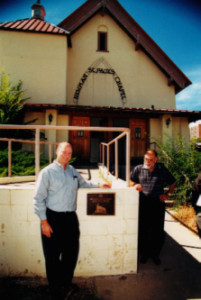
Who knew that little white church had been a synagogue? The thought occurred to me, what if I could put up a small marker, saying Jews were here, would that work? Jews pirouetting in the middle of the street are a bit odd. I later proposed a monument to the Las Vegas community. I would pay for it. It might promote tourism and awareness of the rich cultural diversity of Las Vegas, New Mexico I argued. I half expected, in my Eastern narrow mind, to hear, go away, we don’t want no Jew signs.
Instead, I was placed in contact with Ray Valdez of the Las Vegas Citizen’s Committee for Historic Preservation. He became my mentor. His answer was yes to my idea. He approached the Catholic Church and the Archbishop in Santa Fe for permission. It was granted. I approached the New Mexico Jewish Historical Society.
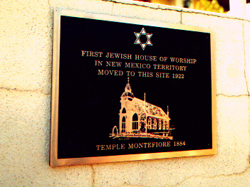
On a hot Sunday afternoon, Jews of every sort, from all over Northern New Mexico, including folks who believed themselves Marranos, hidden Jews from the Spanish Inquisition who were forced to convert or die, seemed to come out of the woodwork. Stanley Hordes, the state historian, delivered a short talk on Crypto-Jews on the steps of the building. Plaques were affixed and permission was granted by the local priest for the Jewish community to once again have erev Shabbat services on Friday night in the Old Montefiore Synagogue.
I wondered if what just happened in Las Vegas, New Mexico might be something that could be done anywhere else. That Sunday in sleepy Las Vegas, New Mexico we remembered anew the Jews of Las Vegas. A community was reborn, and an idea was born, the Jewish American Society for Historic Preservation. www.JASHP.org.
Over the years, JASHP has completed Jewish historical marker projects in 27 states and in five countries. Over seven million people annually benefit from one of our efforts – learning a bit about the American Jewish experience and Jewish commonality as Americans.
There are many more stories to be shared and will be shared. There is even more about Las Vegas, New Mexico. Wander into the city Museum of Las Vegas. Part of it is dedicated to Theodore Roosevelt and the Rough Riders. Jews rode, fought and died with the Rough Riders. Roosevelt judged and chose who would be a Rough Rider on their ability, what they could do, not who they were. That was all that the Jews really wanted.
*
Klinger is founder and president of the Jewish American Society for Historic Preservation.